Affiliate links on Android Authority may earn us a commission. Learn more.
Samsung Galaxy S7 vs Apple iPhone 7
Published onOctober 5, 2016
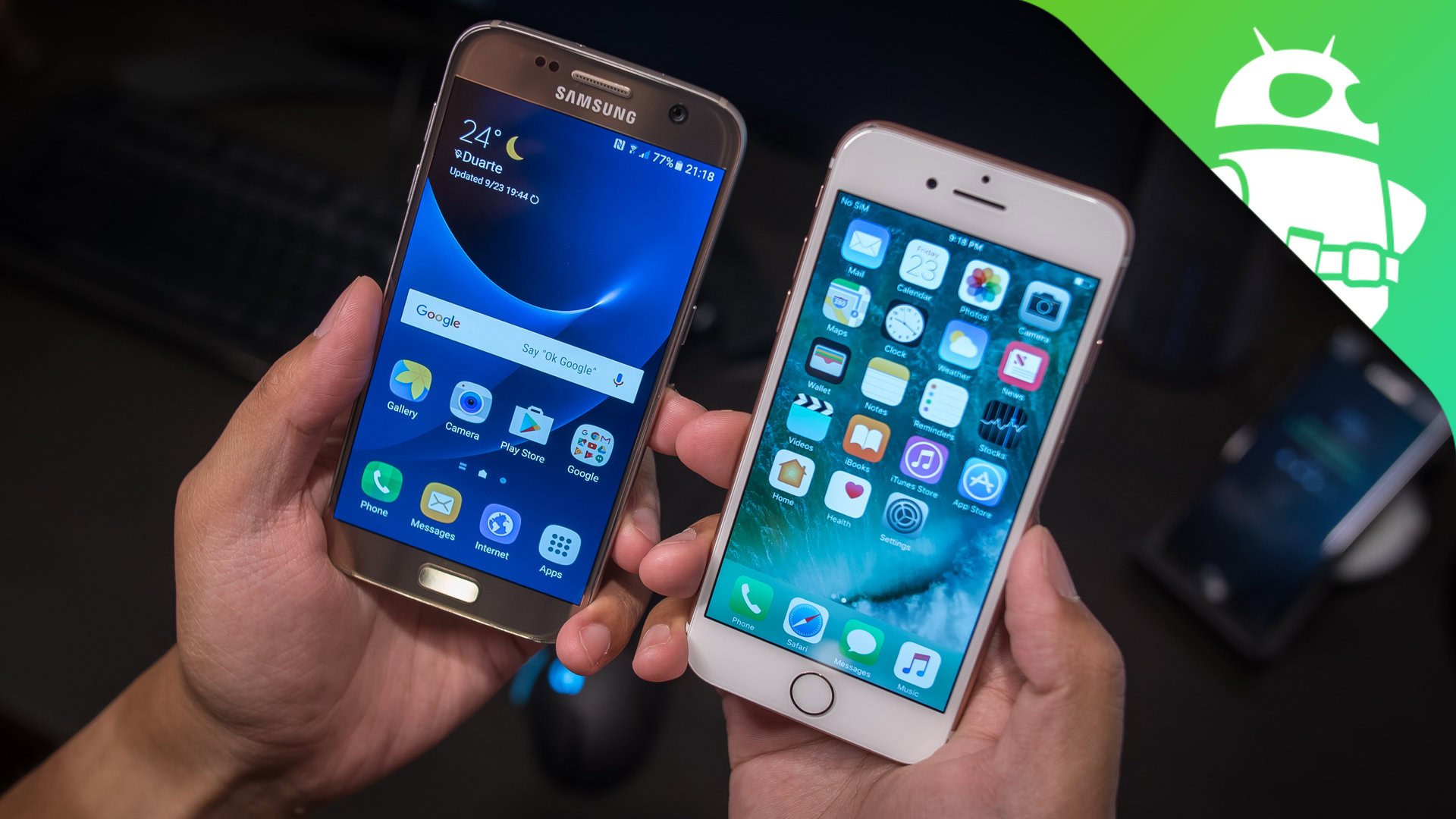
Samsung and Apple go head to head – again. It’s a common comparison to make every year, but the story in this one deals with refinement more than leaps in innovation. Take a look at the latest and greatest that these two companies have to offer in this comparison of the Apple iPhone 7 and the Samsung Galaxy S7.
- Samsung Galaxy S7 review
- Samsung Galaxy S7 Edge review
- Galaxy Note 7 vs iPhone 7 Plus Quick Look: Clash of the titans!
Before we get started, it’s important to note that we are not looking at the bigger versions of either of these phones – for the users that aren’t really into phablet sizes, it’s worth taking a look at just the smaller editions of these two popular smartphone lines. If the S Pen in the Galaxy Note 7 or the dual cameras of the iPhone 7 Plus are more your fancy, however, we do have a quick look already available to check out, with more comprehensive comparisons to come.
Design

The stories for either of these smartphones are very similar – if you are familiar with previous editions of the Galaxy or the iPhone, you know what to expect here.
Samsung’s foray into doing dual glass designs continues in the S7 with an accessible size and a curve on the back that further helps with handling. Aside from that, however, there are no major changes to the design language that Samsung has become accustomed to using in the Galaxy line. The tactile home button is still flanked by the recent apps and back capacitive keys while the power button and volume rocker are still at home on the metal frame. As one of the last phones on the Galaxy line to use a microUSB charging port, the S7 is actually a tad bit dated compared to the USB-C toting Galaxy Note 7.
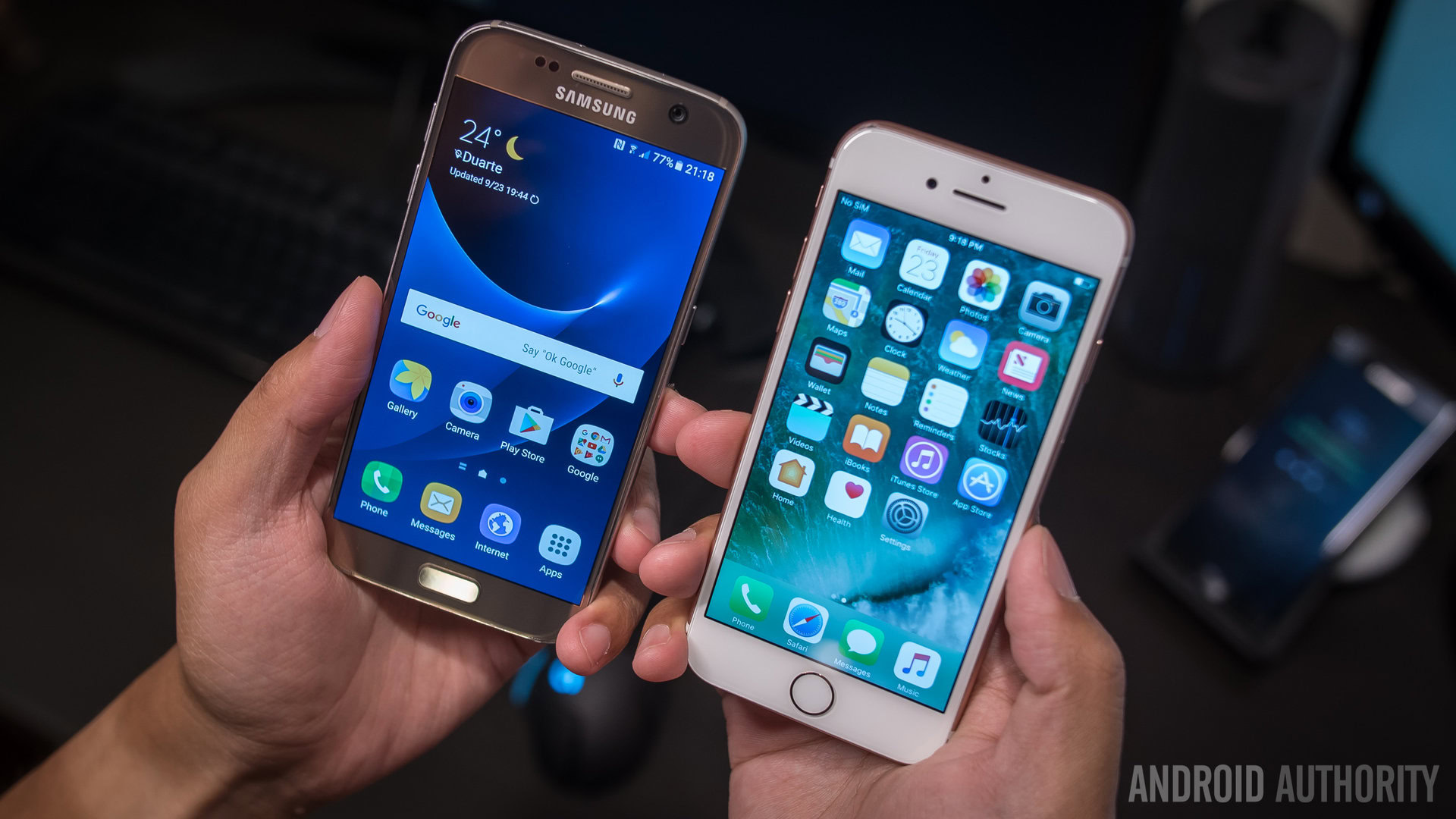
But handling will actually favor the smaller device, which the iPhone 7 definitely is. Its 4.7 inch display is mostly the reason for this and it is still rather refreshing to use a smaller display compared to many of the very large devices that have been coming out in recent years. But wrapped around that screen is a body that is almost completely the same as last year’s iPhone 6S. A first glance could make one mistake the current iPhone for the previous one, but there are a couple very significant changes – the lack of a headphone jack and the new home button.
The omission of the headphone jack is a very bold choice for Apple, as the company is basically banking on Lightning port compliance as the future of portable audio. Whether or not you are a fan of this choice, it’s here to stay in the iPhone 7 and 7 Plus – and we’ve already had to deal with the change when reaching for our commonly used headphones. The adapter that comes with the phone is a required but welcome addition in the box, but users will probably just have to keep it connected to their main headphones.
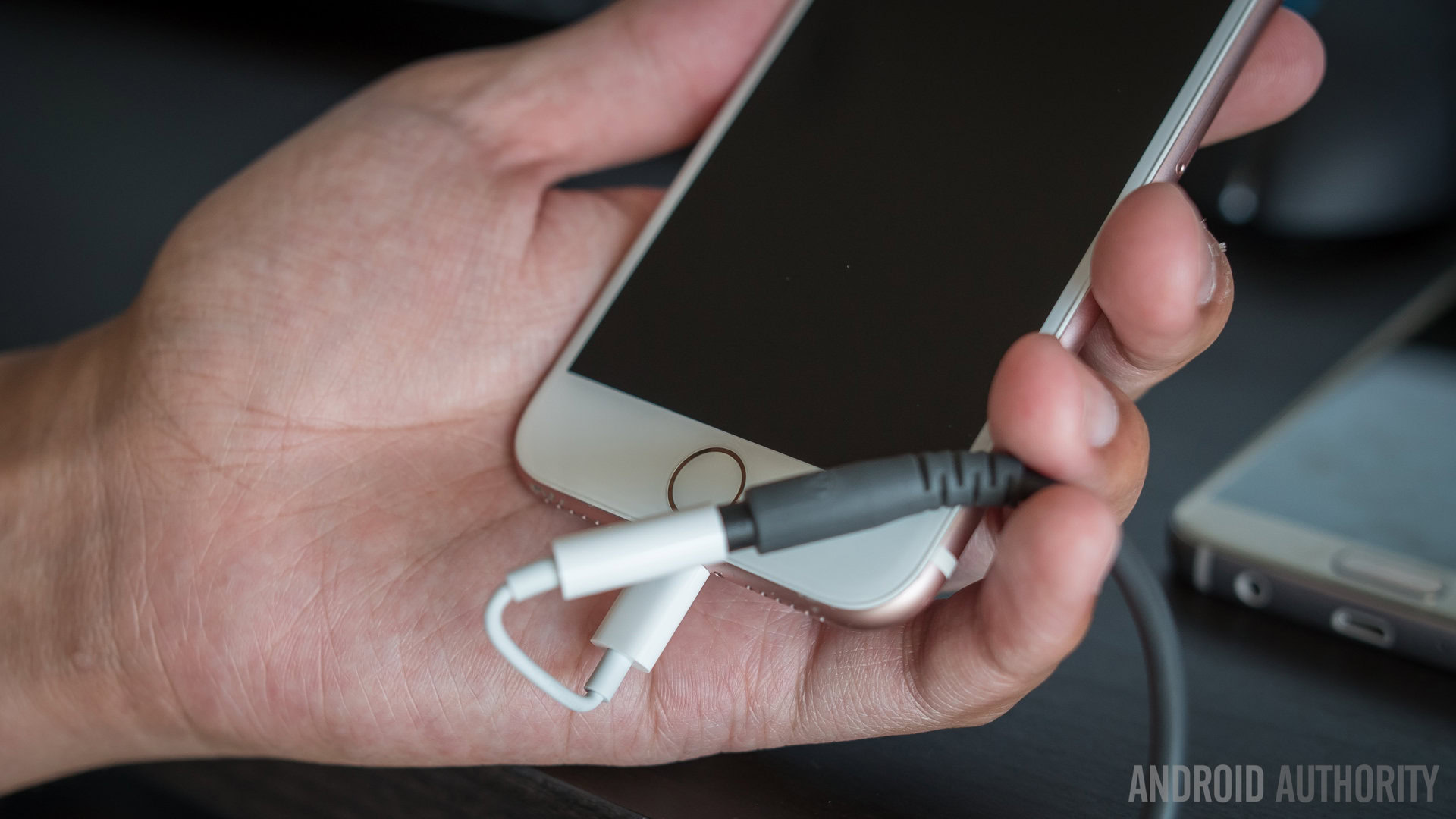
Apple also did away with a physical home button and moved toward a capacitive area underneath the screen that still manages to retain the classic look. Though it doesn’t click anymore, haptic feedback due to Force Touch gives off the feel of a physical button. I get why Apple did this, as it is a possible gateway to using Force Touch on the screen – users might be inclined to try pressing on the screen as hard as they have to press on the home button. But my biggest gripe regarding this new home button is how hard it is to know if you have actually pressed it hard enough when the phone is resting on a table off hand. The haptic feedback is best felt when the phone is in one’s hand – anywhere else, however, and it feels nonexistent and weird.
Just as choosing the right color of either phone (and there are quite a few to choose from) is a personal choice, so to is the choice between Apple and Samsung. There is so much more to this comparison than just the look and feel of either device, but at first glance, perhaps the smaller size for handling or the bigger size for more real estate will sway users one way or another. One thing is for certain though – the changes in either phone are few and far between as both phones remain incredibly familiar.
Display
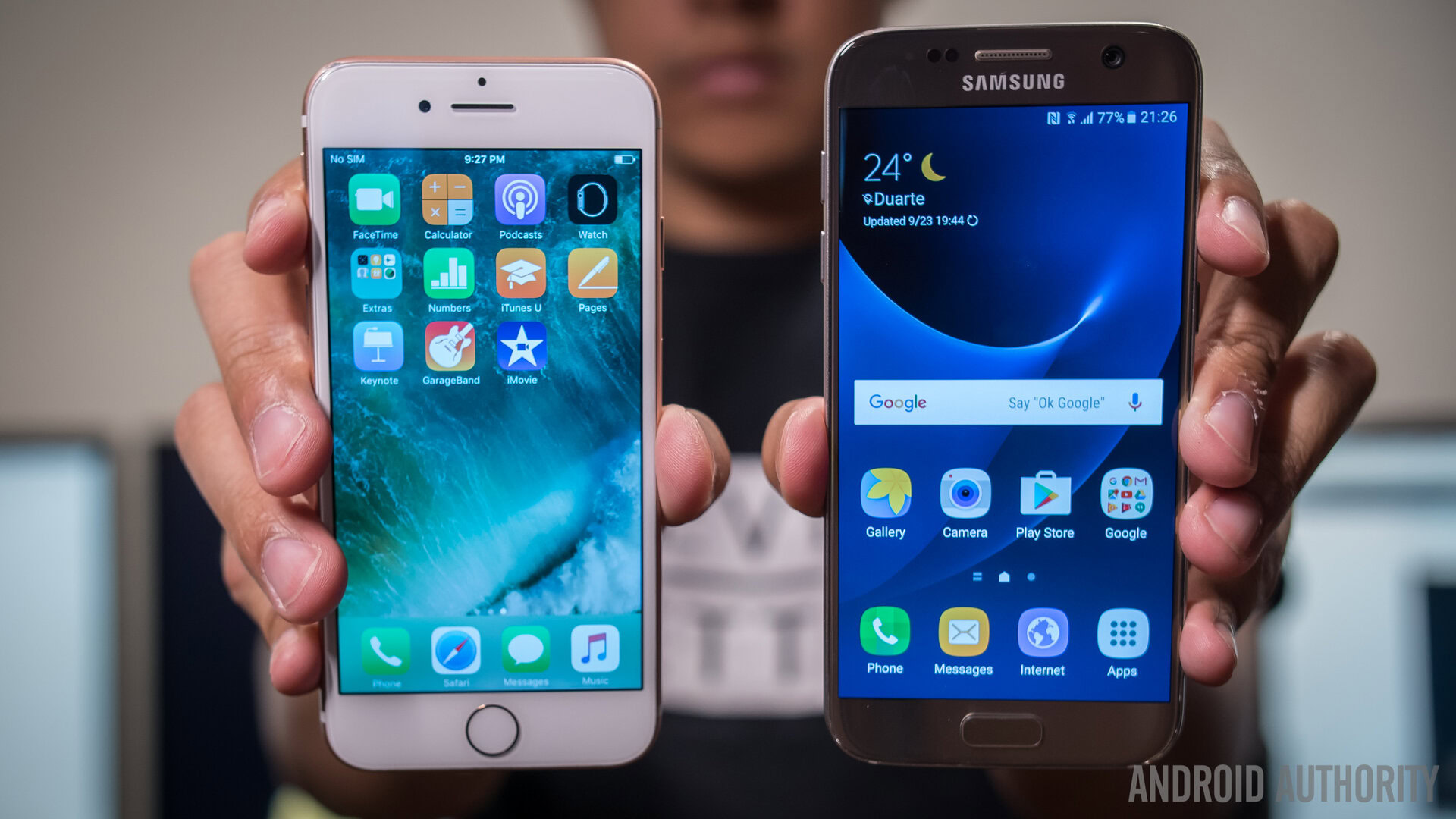
A larger size on the Galaxy S7 display is not all it has over the iPhone – resolution is a big deal and Android flagships tend to trump the iPhones in this category every single year. Though Apple is content with having lower pixel density, it’s hard to deny the advantage that Quad HD resolution gives the Galaxy S7 Super AMOLED display over the 1334×750 resolution of the iPhone’s IPS panel.
That said, the difference in display quality is actually not super noticeable, considering the smaller size of the iPhone display helps mask its lower resolution. And even then, having just over 720p doesn’t mean that text and media are pixelated on the iPhone. Quite the contrary, the iPhone manages to still be quite enjoyable and displays colors quite well without the need for the extra saturation that Samsung’s Super AMOLED displays tend to do.
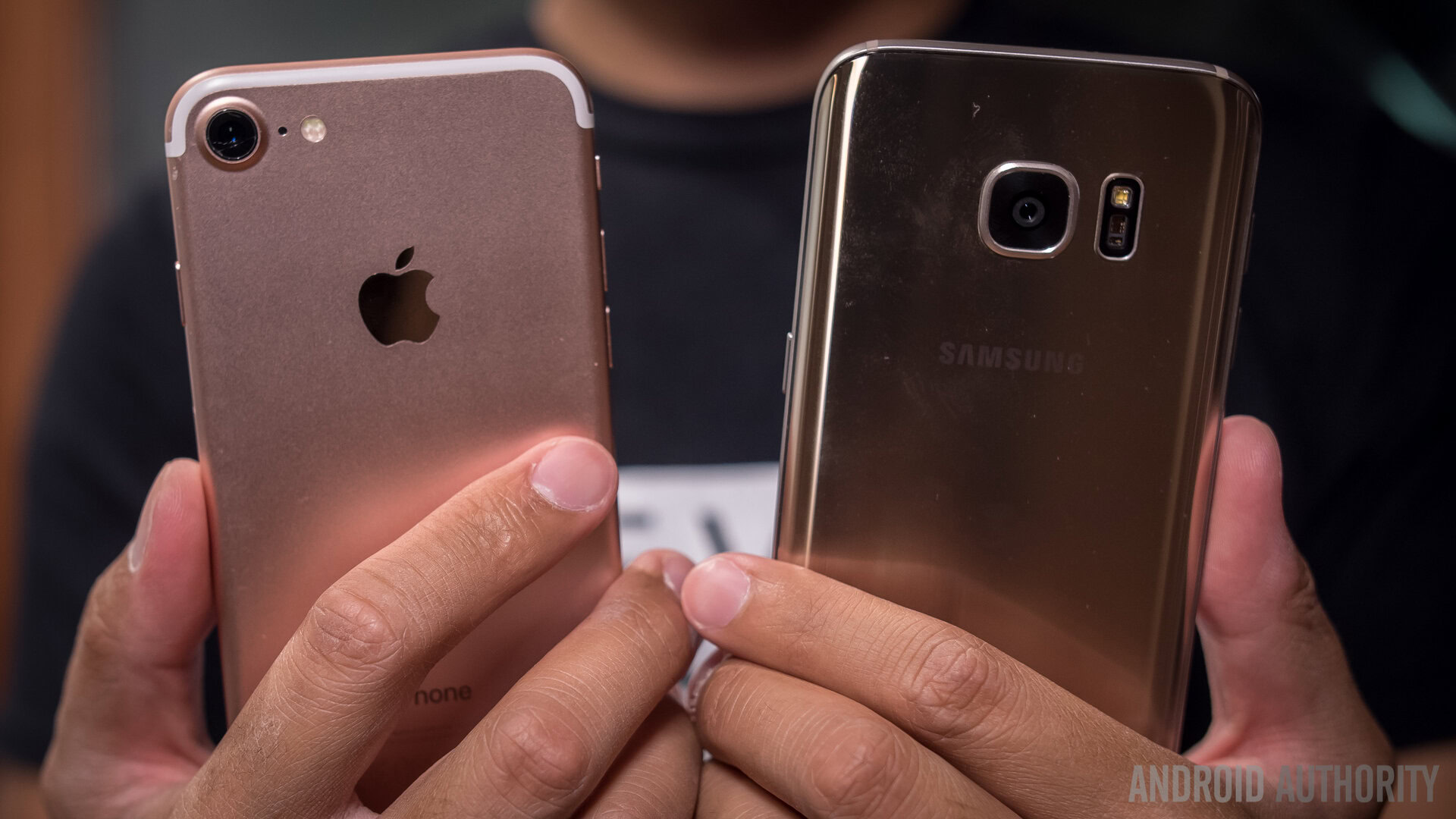
While the colors of the Samsung can still be toned down to one’s tastes, there’s little denying that the white colors on the Galaxy S7 are warmer. On the other end of the spectrum, the blacks of the S7 are definitely truer due to the nature of AMOLED screens. And that further works in Samsung’s favor because the S7 adds features like Always On Display to the S7, where the phone can still display some information in standby. AOD tends to be a useful feature no matter where it appears, and Apple has yet to provide an answer for this display trend in the world of Android.
Of course, there is also the Edge display of the Galaxy S7 Edge, which also comes with a larger display and body akin to that of the Note 7. If you are a fan of the Edge UX, that is another feather in Samsung’s cap and yet another feature that Apple does not have an answer for.
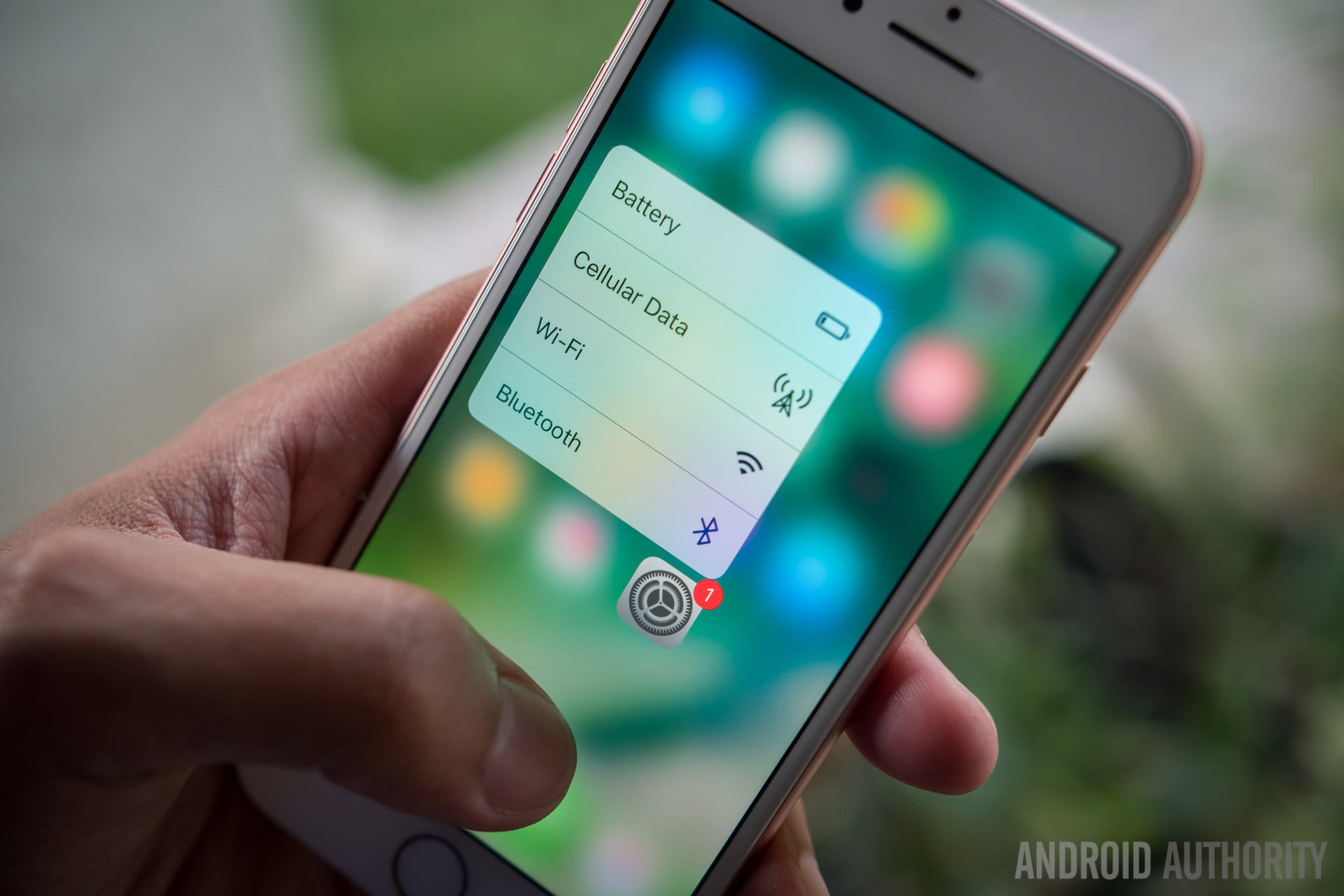
What Apple can tout on the iPhone is Force Touch, a pressure sensitive layer in the screen that responds to harder presses with extra shortcuts and functions. New users will tend to just press really hard everywhere until they get the hang of it, but after some time Force Touch can be a useful tool for getting places faster. However, we find that if this feature was not part of the iPhone, it wouldn’t be missed all that much.
Either way, the display experience is enjoyable no matter which phone is chosen – but the spec hungry will undoubtedly go for the Galaxy S7, not just for the higher resolution, but for the extra features. One final nod still has to go to the iPhone for its accessibility, however, as its smaller display and overall size are still a refreshing change of pace.
Performance
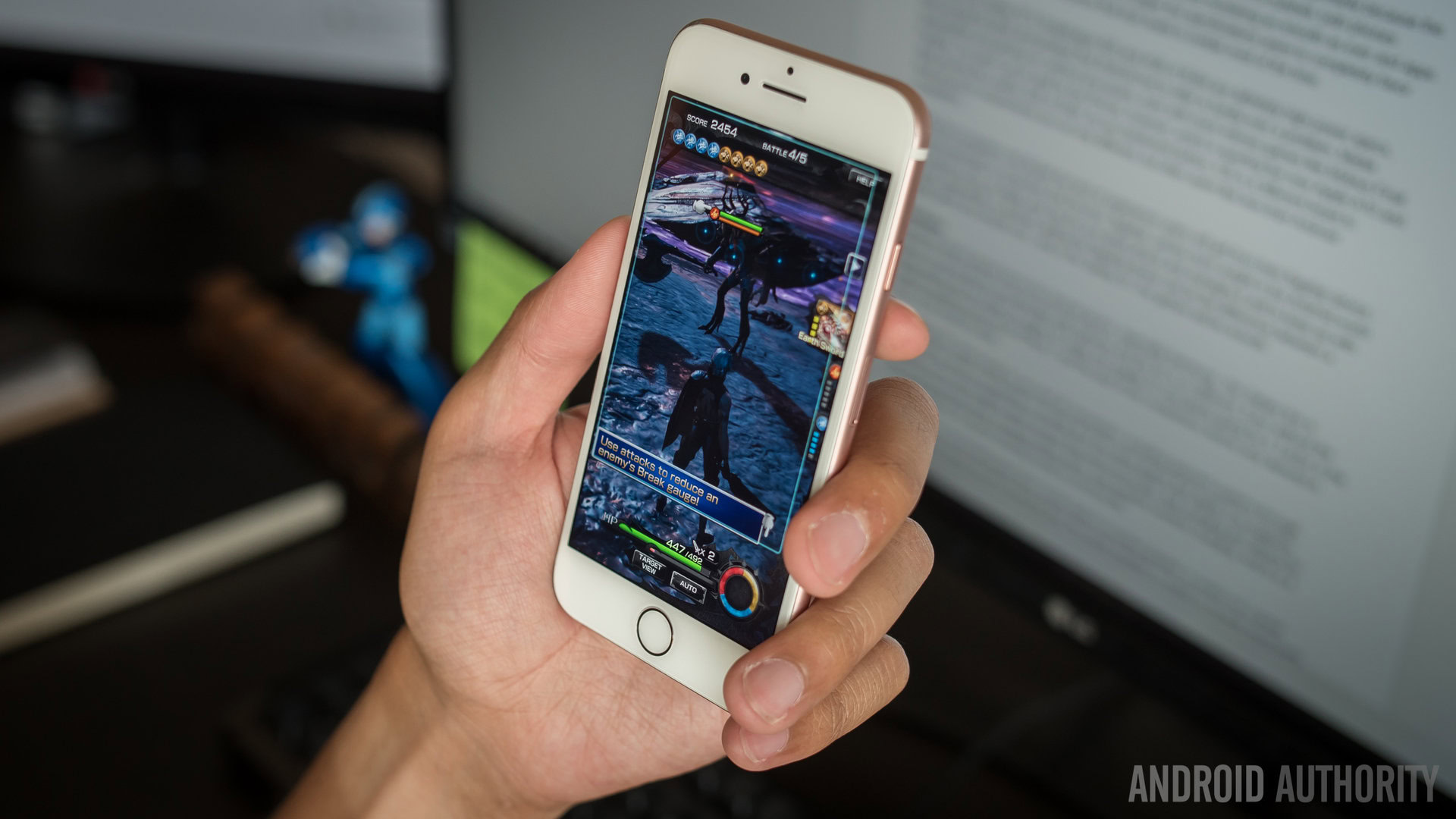
Performance is rather tough to gauge in a battle between Android and iOS, primarily because the two systems require very different specifications to run smoothly. In a nutshell, both phones perform exactly as they should, with main OS experiences remaining as smooth as ever and apps complementing them just as well. Though on paper the specifications seem to completely favor the Galaxy S7, iOS continues to prove that lean leads to nimble most of the time.
That said, the Galaxy S7’s Snapdragon 820 and 4GB of RAM are definitely high power specs, and running the latest and greatest that Android has to offer is hardly ever a problem. Media consumption and gaming run without any issues, even with more intense games like Mobius Final Fantasy. The same can be said for the iPhone, however, which is sporting the new Apple A10 Fusion chipset and what sounds like a paltry 2GB of RAM. As we mentioned before, iOS is a different beast to Android and its requirements are not only different, but often seem like less than Android competitors.
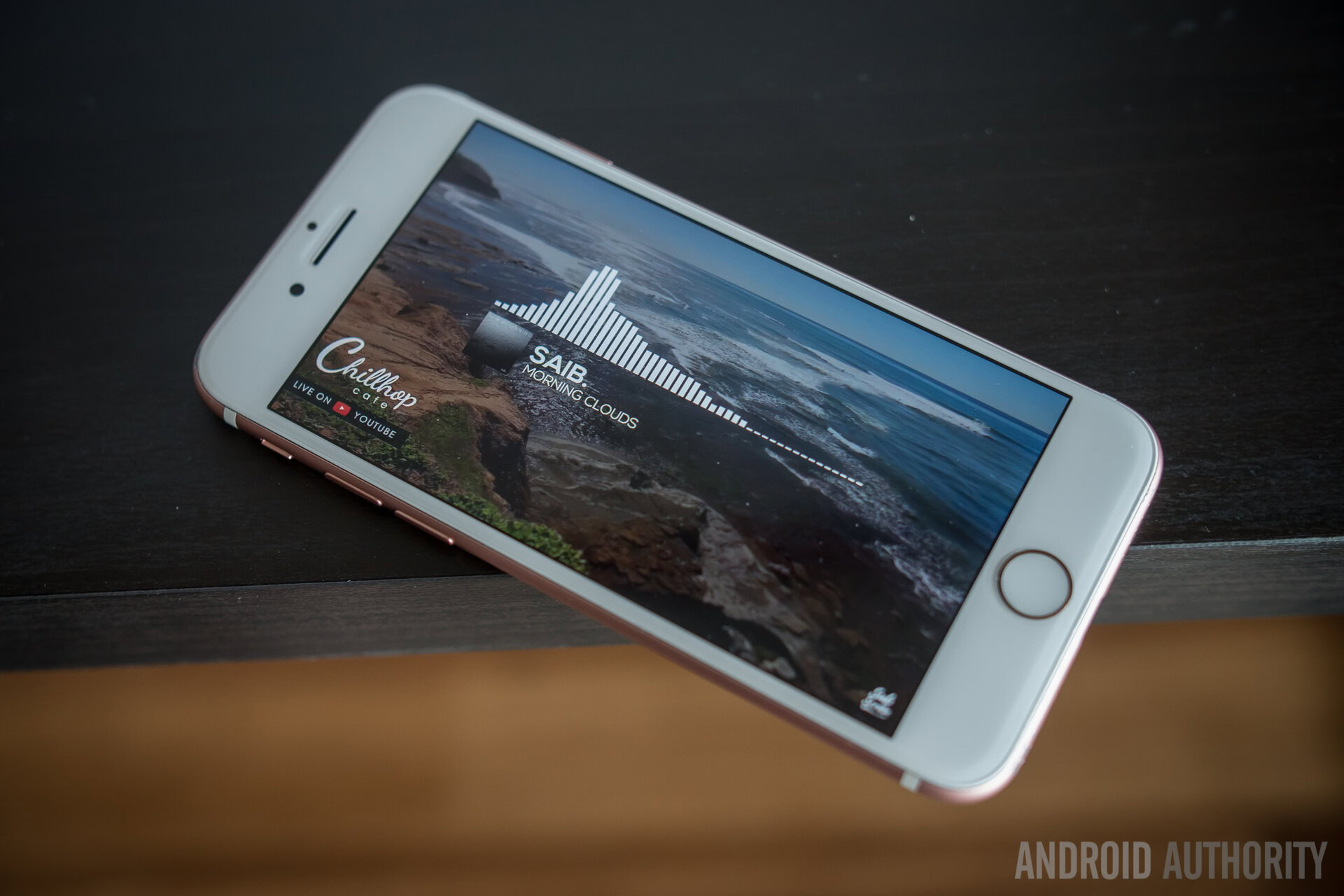
Really, the ecosystems will dictate the kind of experience users will get from their flagship device – it is more important to remember that the term ‘flagship’ carries more weight in the Android world than it does in iOS, as Apple only has the one latest phone and manages it well to keep up with the best. Meanwhile, in Android, getting the flagship device can be the difference between a choppy game and smooth one – and in the Galaxy S7, the games will be smooth.
Hardware
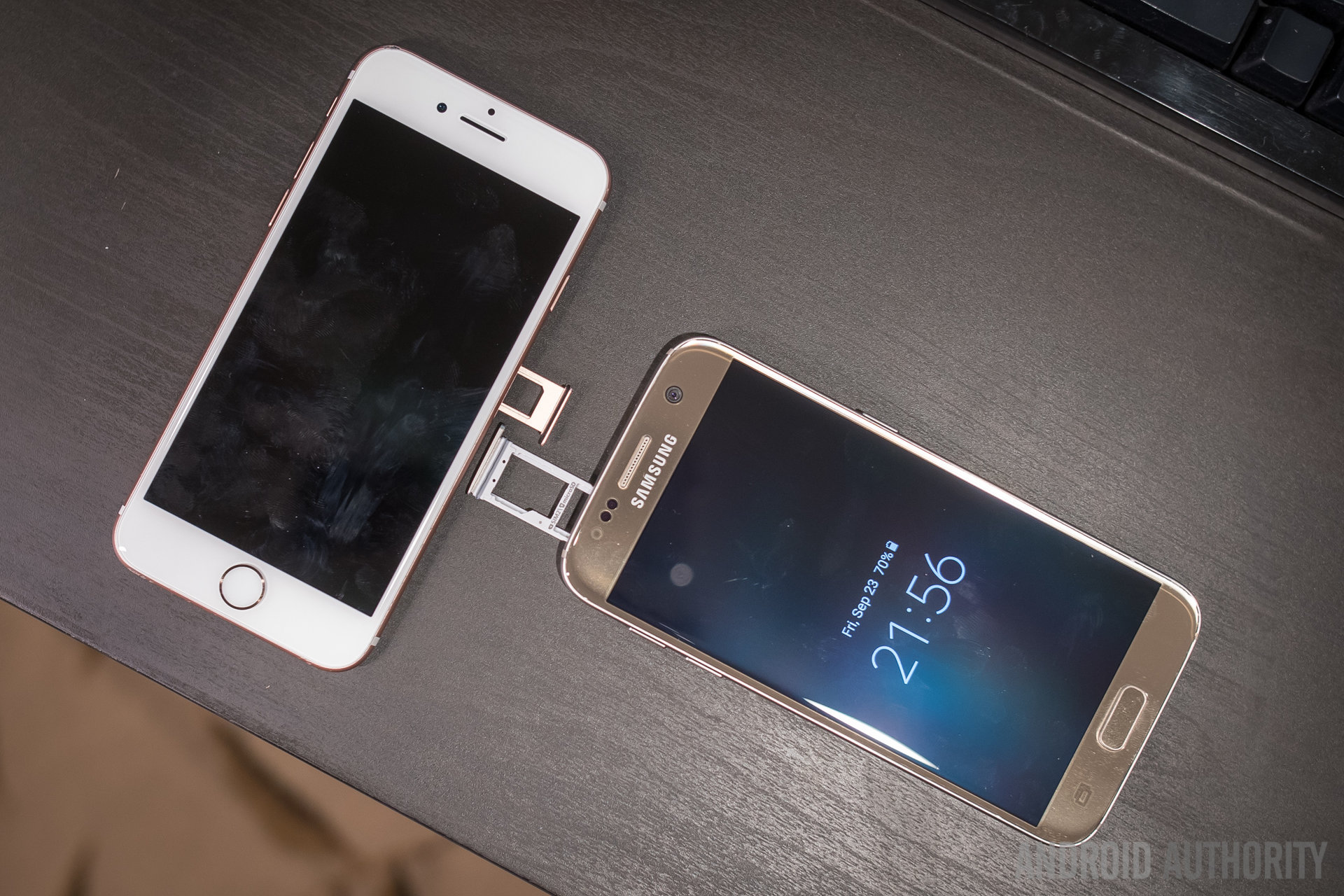
Hardware almost always favors the Android device, especially Samsung – the Galaxy line is known for being almost oversaturated with features and the S7 is no different. Even without the Edge display and the Edge UX of the S7 Edge, the regular S7 has plenty going for it. Factor in the omitted headphone jack of the iPhone 7 and this part of the comparison seems very skewed in favor of the Android camp.
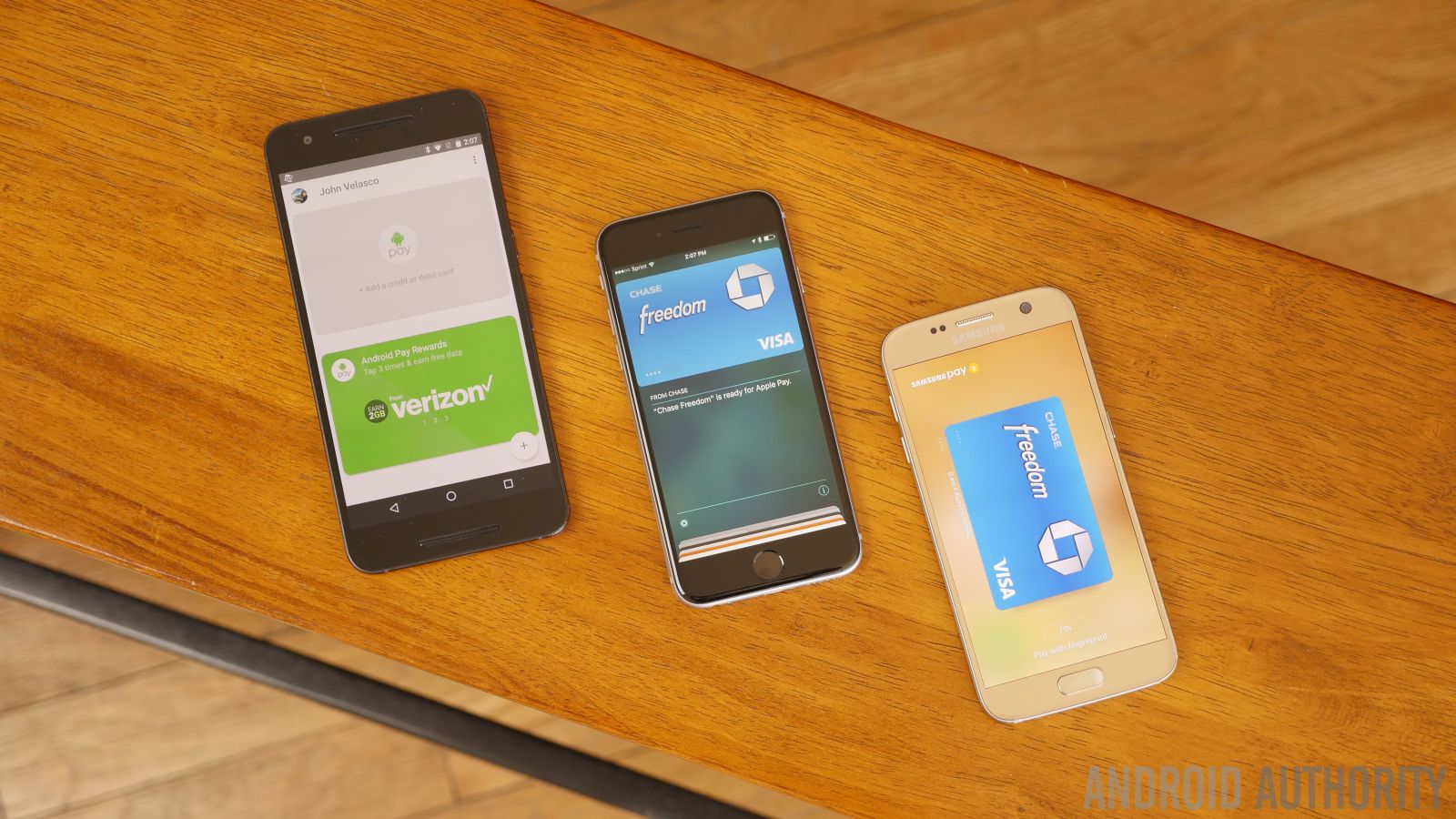
The Galaxy S7 comes ready for any and all connections, including payment systems through Samsung Pay, which is accessible in virtually all of the same places that Apple Pay supports. Though it is one of the slightly dated devices that uses microUSB, that charging port allows for fast charging so that power is always within reach. This includes wireless charging, which is a welcome addition for anyone looking to lead a cord-free life.
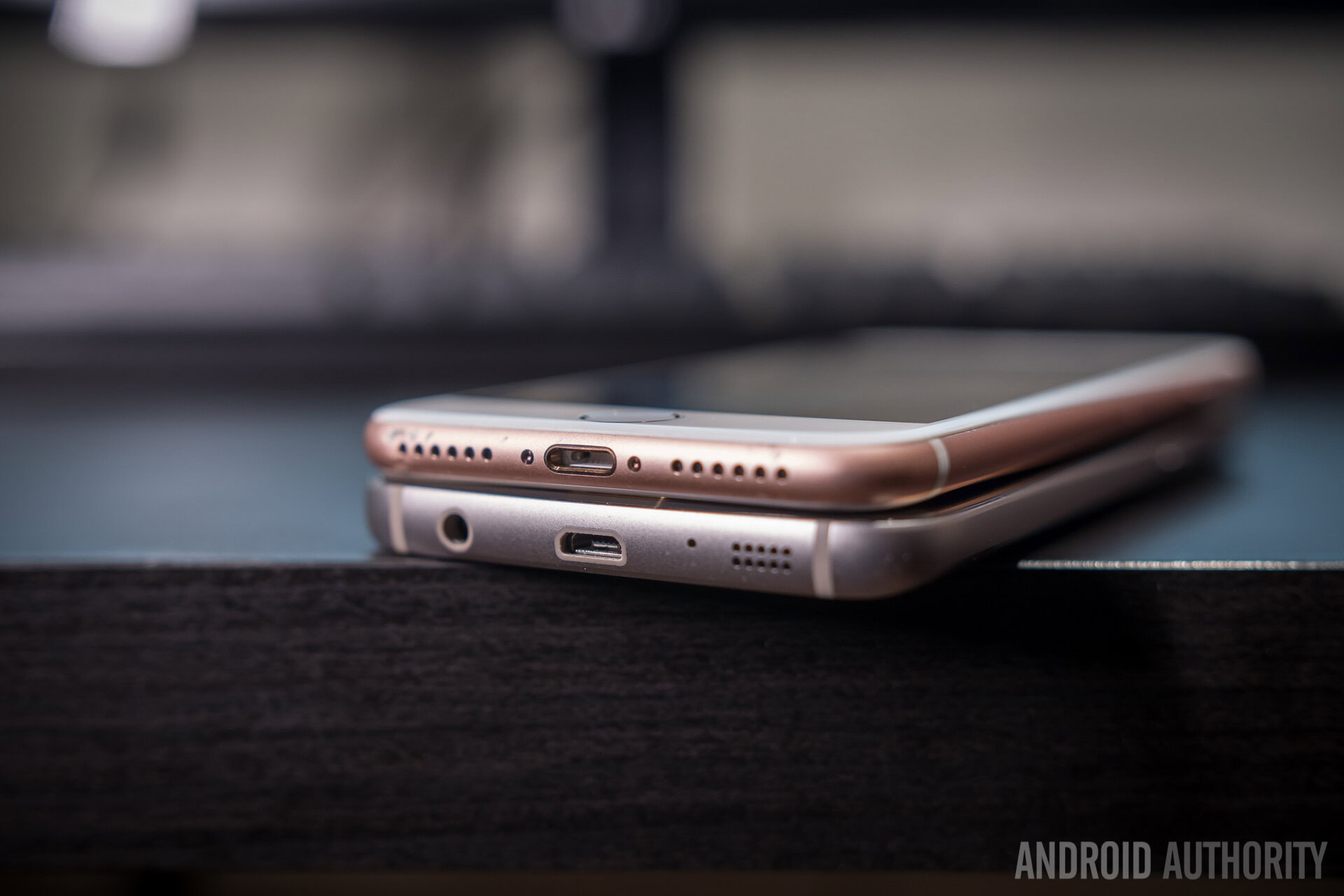
Audio is, at first, not in Samsung’s favor, as the bottom mounted speaker is simply not a great performer. While audio can get somewhat loud, the single speaker is unable to provide good body and richness to the sound. The iPhone, on the other hand, now has a stereo dual speaker setup – one on the bottom and one in the earpiece – that provides better overall sound quality and a rather surprising amount of volume when considering the smaller iPhone 7.
But that is where audio junkies are going to have a fit, because despite the step forward in the speakers, many believe that Apple have made a weird choice in removing the headphone jack. The Lightning port has to pull multiple duties, as a result, and the adapter that comes with the iPhone becomes less of an accessory and more of a necessity. Of course, wireless audio is a choice if available. Using the adapter on a pair of headphones is a chore that we have yet to get fully used to, but it remains to be seen how much of a nuisance it will continue to be.
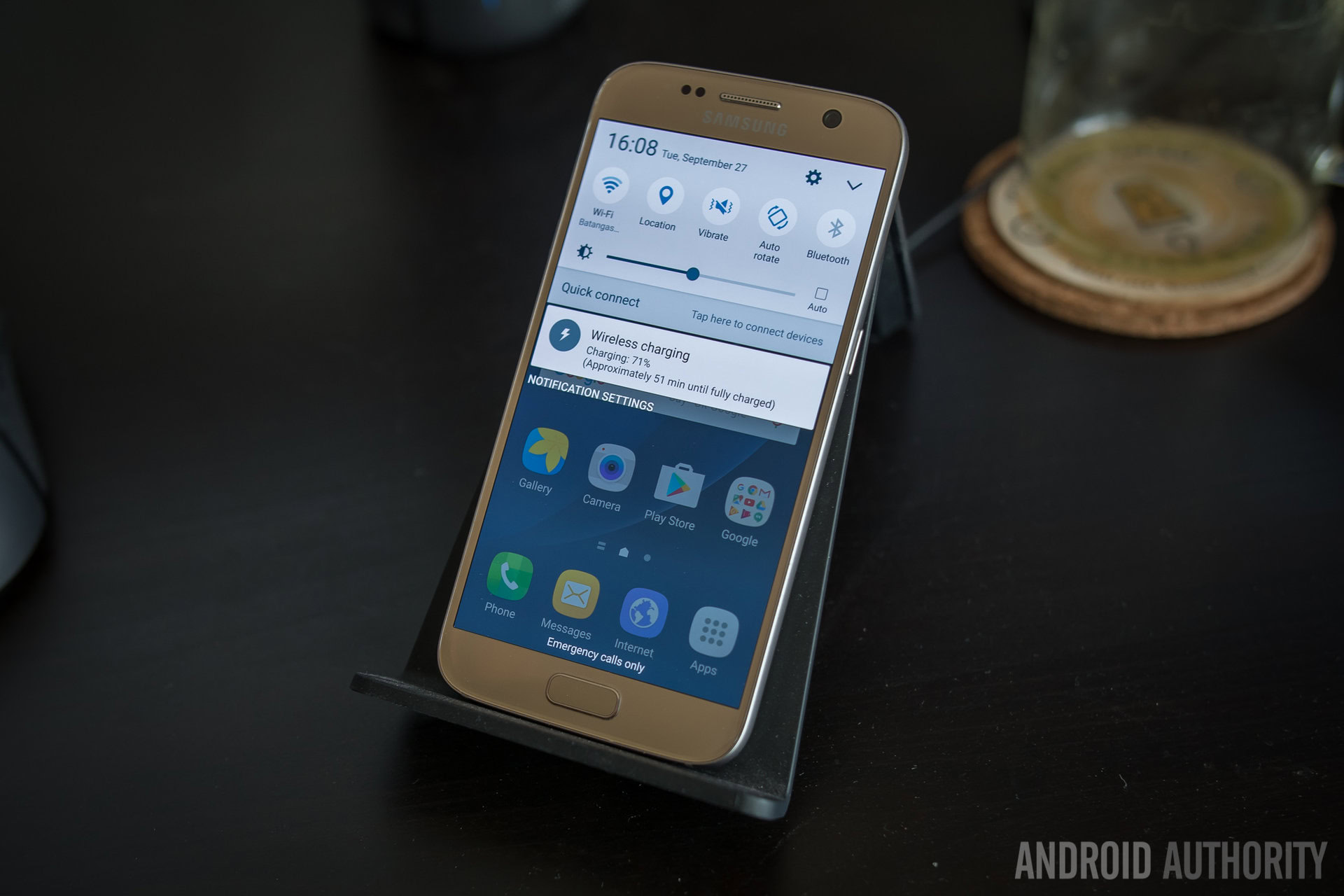
Battery life in the Galaxy S7 was pretty standard, with up to 4 hours of screen on time coming in a typical day’s work. Since then, it has been able to maintain that kind of longevity, though taking advantage of the fast and wireless charging solutions definitely made up for any shortcomings. While such feature are not totally available in the iPhone, we did notice that charging time was actually somewhat comparable. The smaller 1960mAh capacity is probably the reason why, but getting some power in the iPhone in critical moments was still easy, all the same. John Velasco found that the phone was able to get through a day and a bit more especially if usage is a little bit frugal. And the standby time of the iPhone is still positively noticeable – leave the phone sitting without any input and you can expect the percentage to be very close to where you originally left it.
And finally, all of these features in either phone are protected by IP certification. The Galaxy S7, despite a couple failed tests in water stress tests, can keep running if it accidentally takes a dip. The same can now be said for the iPhone, whose IP67 certification protects it from dust and somewhat shallow depths of water for up to 30 minutes.
The feature lists get further apart when the Galaxy Note 7 is pitted against the iPhone 7 Plus, but in this battle of the smaller phones, Apple has managed to close the gap a bit with water resistance and its Force Touch display – but without that headphone jack, some users will probably go for the Galaxy S7 (or most any other device, really) to continue enjoying music the way we have for close to a century now.
Camera
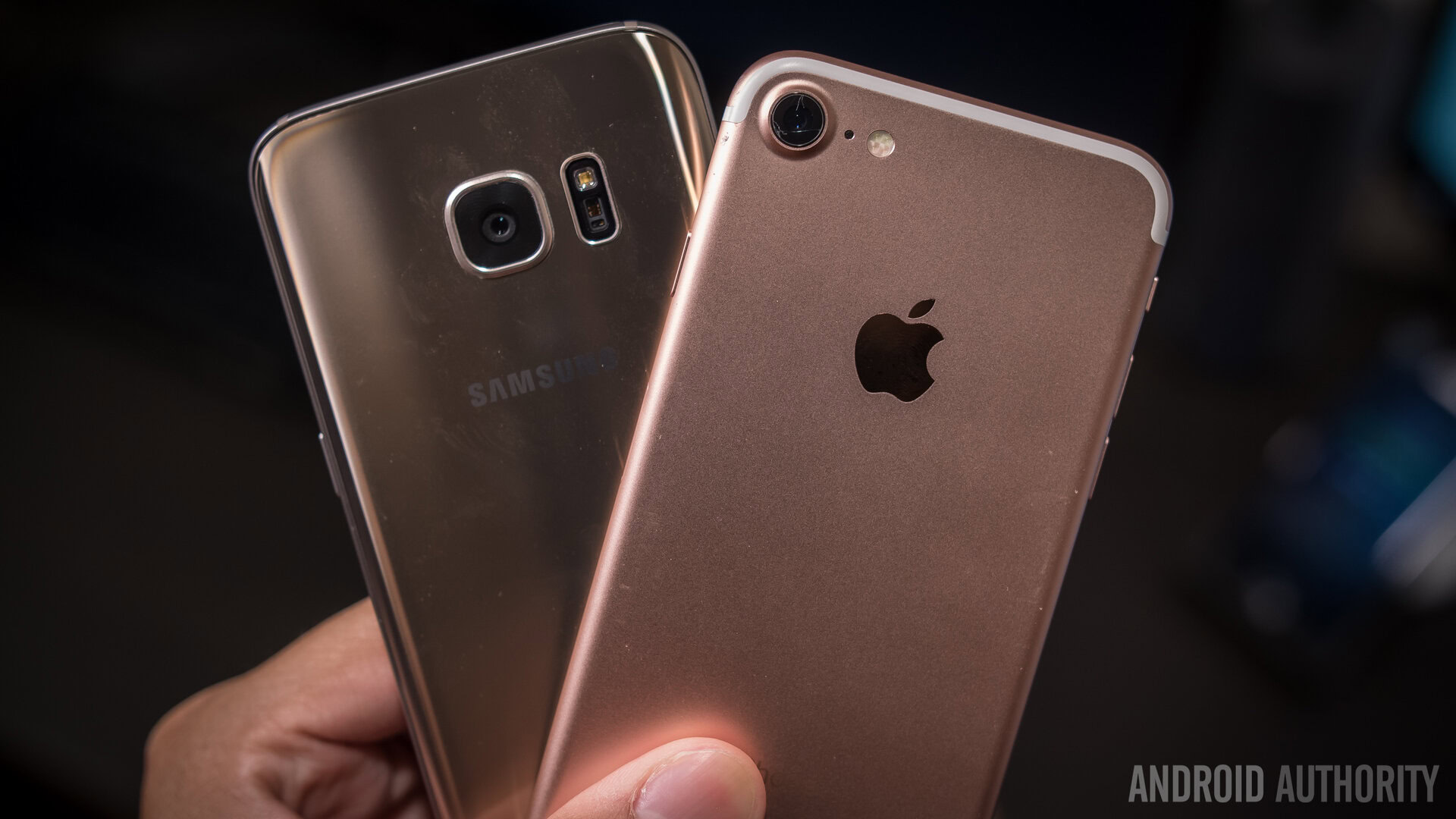
The cameras of the Galaxy S7 and the iPhone 7 are actually rather similar in specification – and thankfully that has translated to good performance in plenty of comparisons in the past. Indeed, the Samsung and Apple battle has resulted in some of the best camera quality in their respective sides of the spectrum. The same goes for this year’s comparison. For a closer look at a comparison of these two camera packages, we have a comparison video and post that checks on the stabilization and closely analyzes a few photos.
Before getting into the actual main cameras, first, let’s talk selfies. The front cameras are actually a bit different between these two, and a couple of features might make people lean toward the Galaxy S7 even though it has a 5MP first facing shooter. The 5MP is lower than the 7MP shooter of the iPhone 7, but it is capable of 2k video recording. For those of you that are looking to do some nice vlogs or videos using the front facing shooter, the Galaxy S7 has that going for it. On top of that are a couple of extra features including a beauty mode that can be adjusted in order to make one’s face look more photogenic.
Samsung outfitted the S7 with a optically stabilized 12MP dual-pixel sensor that uses Focus Pixels for faster autofocus. Aperture comes in at f/1.7 and 4k video recording is available without software stabilization. On top of that, the size of the pixels were to help with better low light performance. On the other hand, the iPhone 7 also sports 12MP, is optically stabilized, and has as similar aperture at f/1.8. 4k video recording is also available here, but the setting is rather deep in the settings area and is not easily changeable in the camera app itself.
Which is where the differences really show – in the controls. While the iPhone has always been known for its camera’s ease of use, the Android world has gradually embraced more granular controls through manual and pro modes. This is very true for the S7, which provides a lot of modes and controls for getting the right shot or video. That Pro mode is accompanied by a number of other functions, most of which are mainstays and are also included in the iPhone: panorama, slow motion, and timelapse.
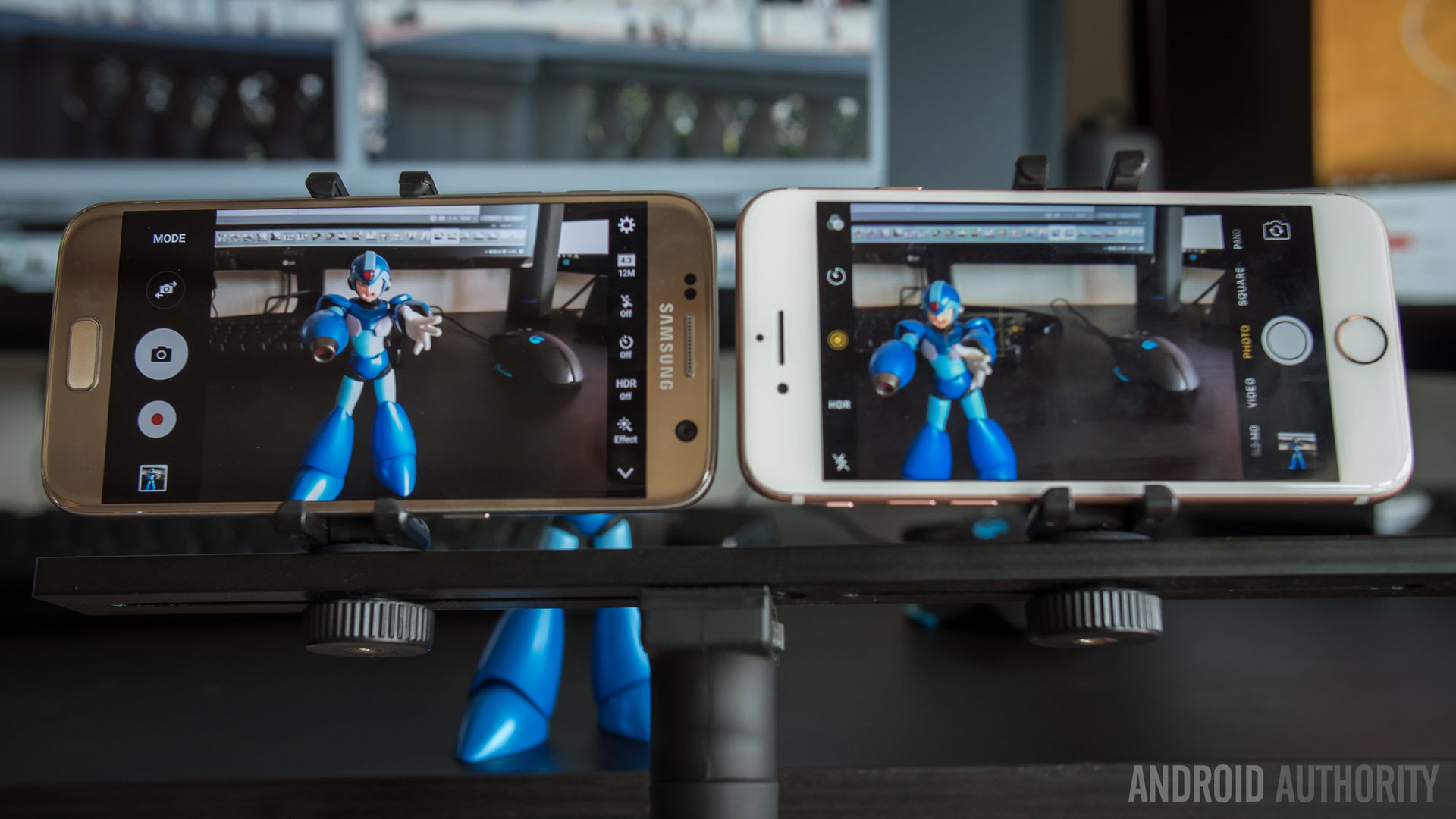
While there might be a little more creativity to be had in the built-in camera of the Galaxy S7, the iPhone’s camera app is just a bit more simplistic. In this latest version of the Galaxy, however, Samsung has made strides toward making the interface more intuitive, but the ease of use will ultimately be up to the user who is trying to snap or shoot.
Picture quality tends to be a bit of a toss up between these, routinely considered the cream of the crop. In our camera comparison, we found that the main difference between the two is the wider overall focal length in both of the cameras, more noticeable in the front facing cameras. In abundant light we see how the two cameras are a bit of a toss up, with neither really pulling ahead of the other in any one category. Especially for well lit shots, the choice generally depends on the desires of the photographer, who might go for the slightly more accurate iPhone camera over the extra saturation and warmth that the S7 tends to add to its photos.
The iPhone 7, without HDR enhancements, actually did a better job with its dynamic range, getting darker areas to show up a little better in multiple exposure settings. However, this was easily remedied in the S7’s HDR, which compensated and actually surpassed the iPhone in our test shot.
Galaxy S7 Camera Samples:
Video stabilization is good in either camera, where OIS is bolstered by a software post-stabilization to make for somewhat robotic looking movement. The main takeaway is that the rolling and warping that this tends to make is actually pretty minimal in either camera. As a videographer, I would just suggest turning off the software stabilization (not possible in the iPhone 7), holding the phone with two hands for steadiness, and recording in 4k where stabilization is turned off anyway. When we did this, the videos looked great from either camera.
iPhone 7 Camera Samples:
Low light actually went Samsung’s way, where its night mode coupled with the large Dual Pixels did a good job of rendering the details of our low light subject. There is simply a little more sharpness in the Galaxy S7 photo over the softer picture that came out of the iPhone 7.
It is hard to pick a winner in the camera section of this comparison, where merits lie in different places. The ease of use for the iPhone 7 camera can become more full-featured via third party camera applications, while the Galaxy S7 did a better job in low light and provides a few more options out of the box. Any already existing allegiance to either iOS or Android will dictate which camera you have on you as a result, so know that in either case you’ll have a powerful and reliable shooter in your pocket. For more on the two cameras, check out our Galaxy S7 vs iPhone 7 camera comparison!
Software
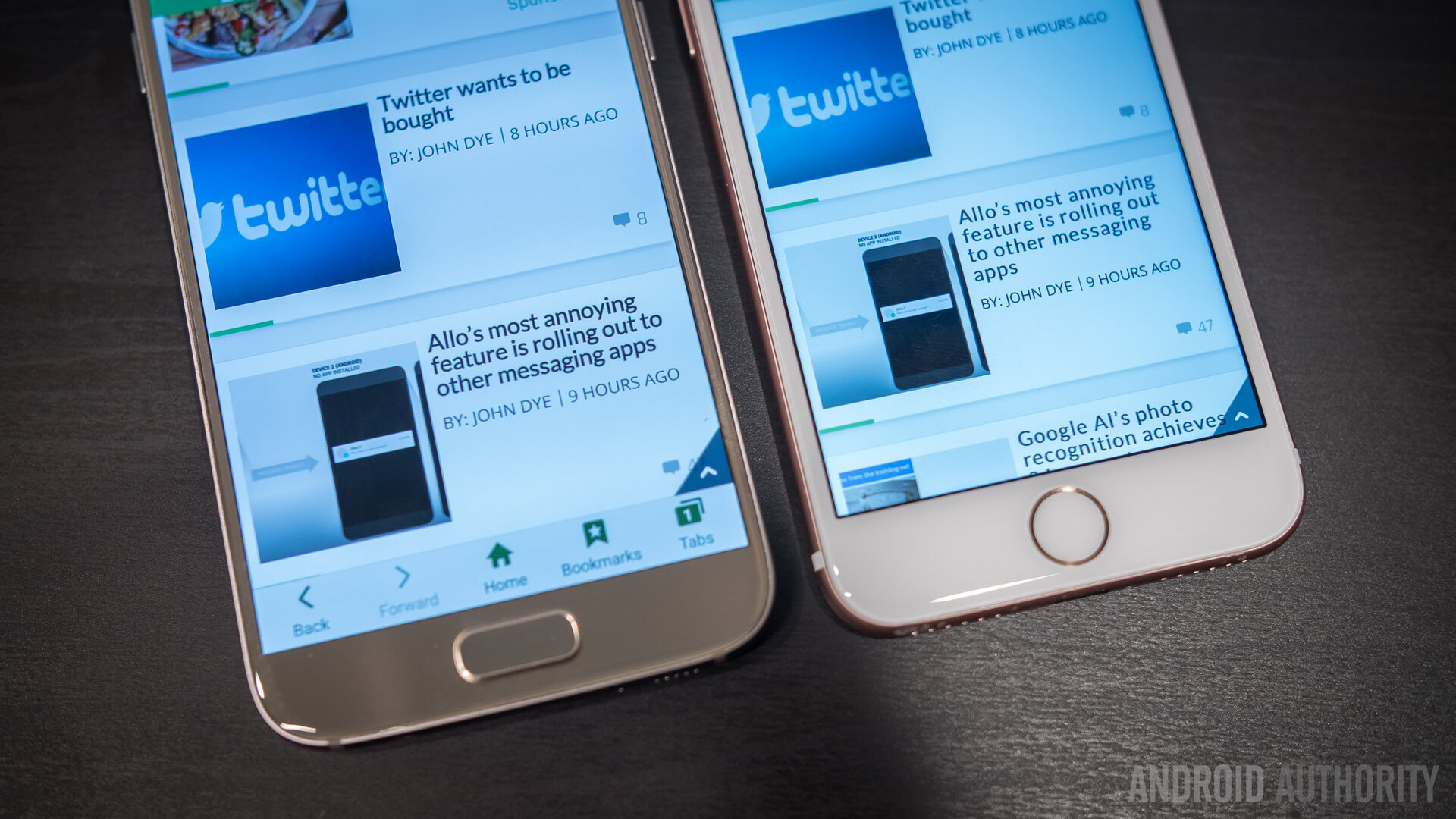
And that leads us to the main crux of the iOS and Android battle – which software you might want to get. In the past, there were real holes in functionality between these two major app ecosystems, but with Google having pretty much every one of their applications available for the iOS platform, that gap has been greatly narrowed. While the transition from iPhone to Android might still be somewhat difficult, the fact remains that almost any user going from one ecosystem to another can make it work.
Apple brought iOS 10 to its newest devices and while it looks largely the same as before, there are a few new additions. There is now a new space for widgets and tickers found to the left of the main homescreens (a la Google Now, kind of) that can also be accessed in the lockscreen and in the notification shade. Speaking of the notification shade, it is still a quick place to see all of one’s notifications in chronological order by day.

Much like the quick settings found in Android’s notification shade, the Control Center is swiped up from the bottom of the screen for access to many easy to reach functions. Swiping to the side makes a few more features appear this time around, as well.
But from there, iOS 10 still performs about as well as it always has, with the level of polish that Apple has managed to maintain for multiple generations. Whether or not users are entrenched in the Apple ecosystems, downloading other platforms like GMail and third party applications fit rather well in the iOS interface.
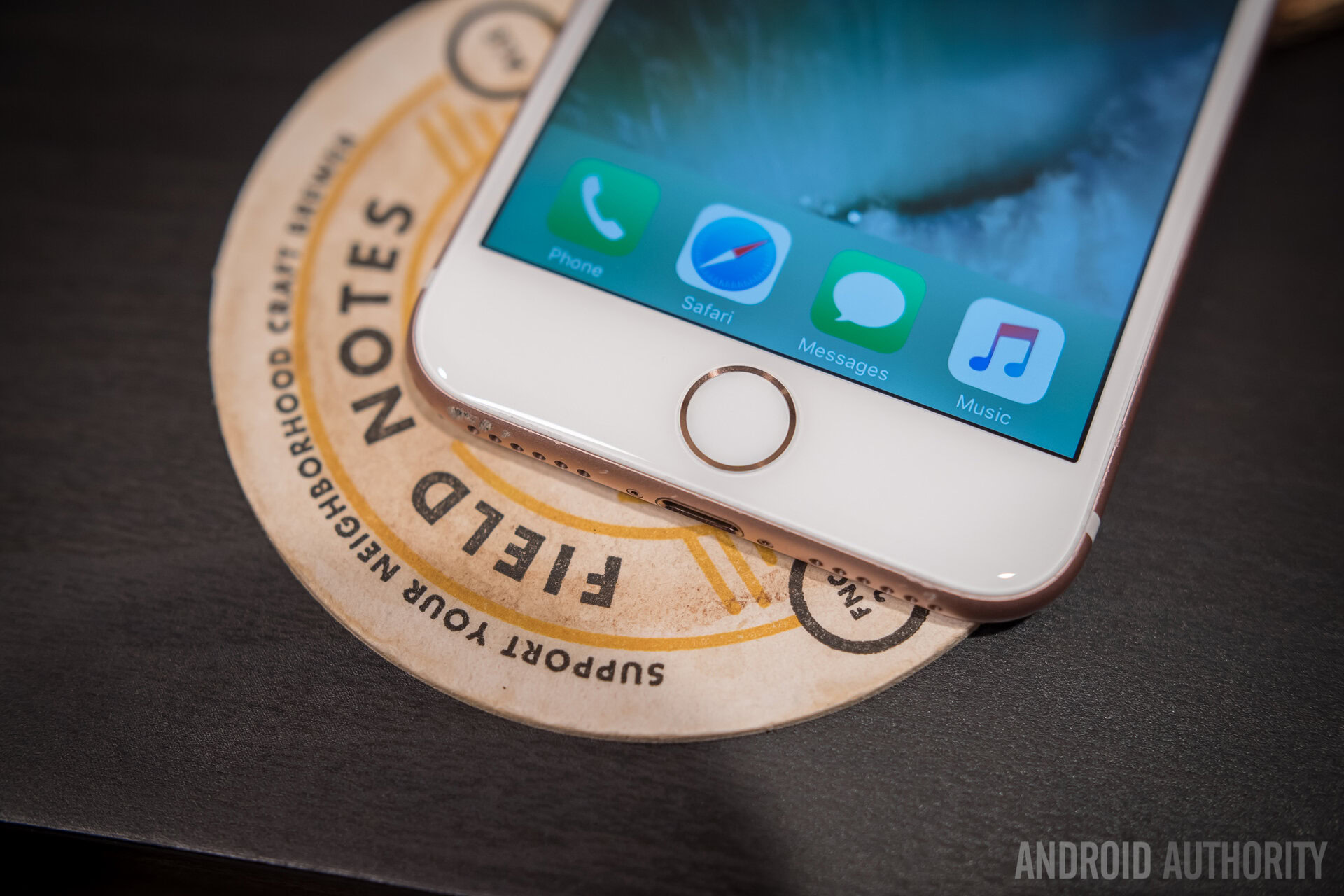
Android, on the other hand, changes drastically depending on the company and phone in question. Samsung, of course, has Touchwiz, which has seen a lot of streamlining over the last couple generations. The S7, despite not having the biggest dial back that the Note 7 enjoyed, still manages to have an accessible interface chock full of features and capabilities. Not to mention, an app drawer. Layer on top of all this the Pop Up Window, Multiwindow, built-in theming support, and more, and it becomes clear how customizable Android can be, even in Samsung’s version of it. Customization is still one of the highlights of the Android ecosystem and will often be the reason why many may prefer the S7 over the iPhone 7.
So it comes down to personal preference, as always. There is always customization to take in to consideration – Android is an operating system that can be catered to exactly what the user wants, but plenty users prefer to have an experience that simply works. Take your pick, but Android users like us do tend to enjoy the process of completely making the OS look and feel exactly the way we want it to.
Gallery
Conclusion
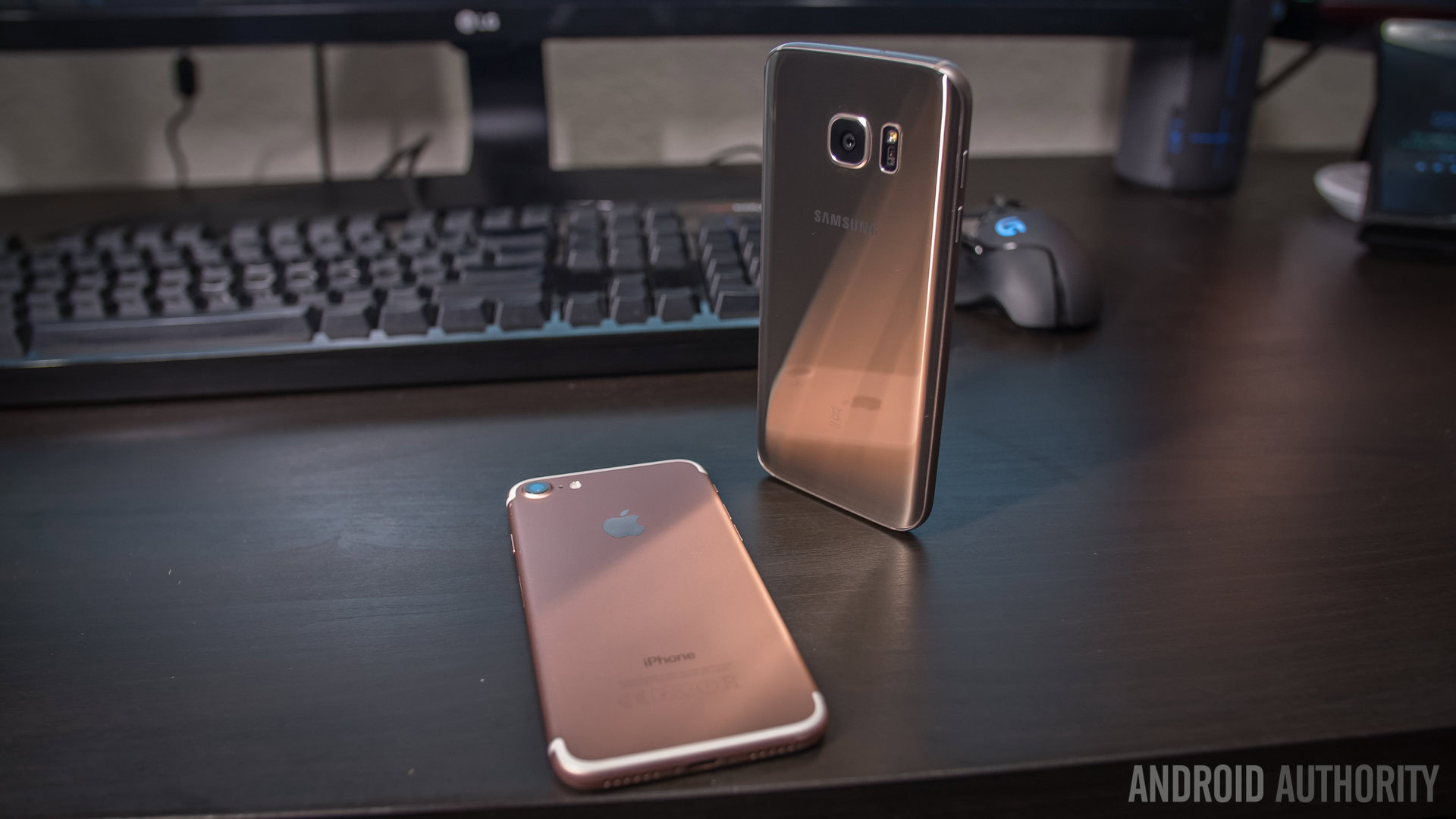
And so, there you have it. A pretty in-depth look at the differences between the smaller smartphones in the respective flagship lines for Apple and Samsung. While there is definitely a lot more to consider when pitting the larger iPhone 7 Plus against the Galaxy Note 7, it is still worth looking at the more accessible and less feature filled devices. In doing so, we find a couple of main takeaways – Apple has done a good job of adding more features in the iPhone so that it no longer seems so far behind in comparison to the sometimes overwhelming feature sets in Samsung’s phones. Consider that both phones have similarly speced cameras and the same water resistance, and these phones become close in quality and capabilities that users can find a good experience either way.
So, it comes down to the operating systems and one’s own preferences for daily interface experiences. Work and play are easy no matter which one you pick, but if customization is more your forte, Android always has your back. Unless you want to customize the outer look of the phone, in which case the third party accessory library of the iPhone is actually far superior. To each their own.
- Samsung Galaxy S7 review
- Samsung Galaxy S7 Edge review
- Galaxy Note 7 vs iPhone 7 Plus Quick Look: Clash of the titans!
Which would you pick? Is Samsung’s small flagship your choice or does the simplicity of the iPhone 7 win you over? Let us know your views in the comments below!